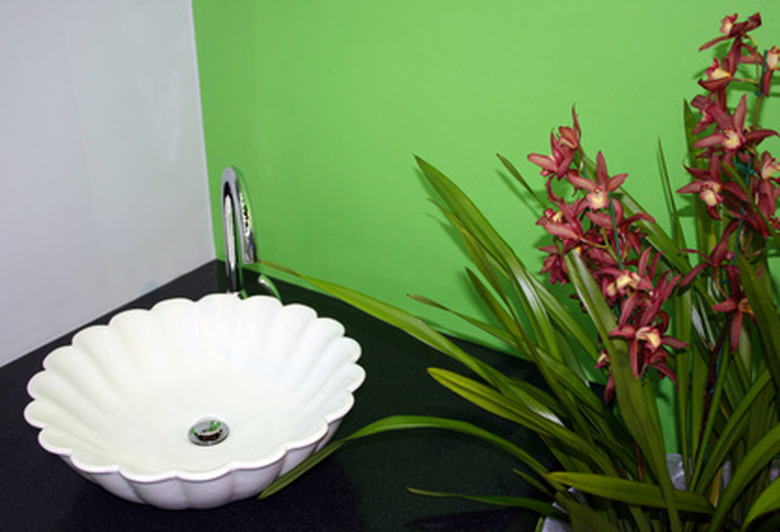Houseplants In Low Humidity
Homes provide a living environment with the perfect, comfortable climate for humans–temperatures around 70 degrees F, year-round, and with low humidity–not exactly the perfect growing conditions for most plants. Luckily, some plants tolerate these growing conditions, and those species are widely used to bring leafy green texture or occasional flowers indoors. You can increase humidity for your houseplants without compromising your comfort level.
Significance
Humidity helps plants control moisture levels in their tissues. Small pores (stomata) on leaves facilitate the exchange of oxygen and carbon dioxide as well as water vapor as the plants make food and grow. Humidity levels (as well as temperature) trigger responses to open or close these pores to control the amount of moisture lost from the plant. If humidity is high, the pores open wide as there's little detriment to losing moisture to a humid atmosphere. Conversely, arid air pulls water vapor from plants and soil, potentially drying and damaging leaf tissues that need to remain moist.
- Homes provide a living environment with the perfect, comfortable climate for humans–temperatures around 70 degrees F, year-round, and with low humidity–not exactly the perfect growing conditions for most plants.
- Small pores (stomata) on leaves facilitate the exchange of oxygen and carbon dioxide as well as water vapor as the plants make food and grow.
Interior Humidity Levels
Indoor humidity rarely gets above 50 percent, notes the American Horticultural Society's book, "Houseplants." Seasonally, interior humidity levels fluctuate based on the weather, but on the whole, homes are relatively dry.
Effects of Low Humidity
According to GardenLine Canada, houseplants generally do well if the humidity level is around 60 percent. Some plants, such as those native to a rainforest, excel when humidity is even higher; desert plants grow perfectly when humidity is as low as 30 percent, but no lower than 20 percent. Each plant species tolerates different humidity levels. The response to inadequate (low) levels are common, regardless of species: browning of leaf tips or edges, abortion of flower buds, short-lasting flowers, premature yellowing and dying of lowermost or oldest leaves, or stunted growth.
Plants Tolerant of Lower Humidity
Plants native to arid regions tend to cope with the lower humidity in homes well if other needs are met, such as temperature and sunlight levels. Many tropical plants cope well if they have leaves that are waxy, scaled, hairy or fleshy, as they help retain moisture in dry air environments. Examples include begonia, air plant bromeliad, pothos vine, cactus, jade plant, lady palm and kentia palm. Choose houseplants known to grow well in your home's typical humidity range; these plants are often readily sold as easy-to-grow houseplants.
- Indoor humidity rarely gets above 50 percent, notes the American Horticultural Society's book, "Houseplants."
- According to GardenLine Canada, houseplants generally do well if the humidity level is around 60 percent.
Increasing Humidity
Excessively dry air still can harm the most resilient of houseplants, and you may try to grow an attractive plant that requires higher humidity levels than a room provides. You can locally increase humidity levels in a home without compromising your comfort level. Portable vapor humidifiers add water vapor into a room. Or, you can mist plants with water or stand them on a pebble tray. Lastly, try grouping houseplants together in the same part of the room where their soil and leaf transpiration will elevate humidity around each other according to "Houseplants" and GardenLine Canada. Proximity to certain rooms, like the bathroom or kitchen, often have higher humidity levels.
References
- GardenLine Canada: Humidity and Houseplants
- "Houseplants"; A. Cort Sinnes, ed.; 1980
